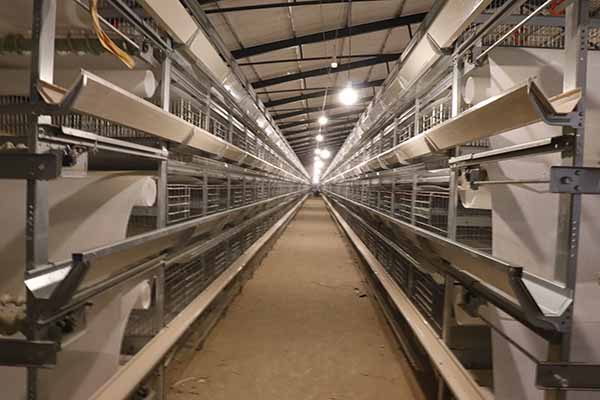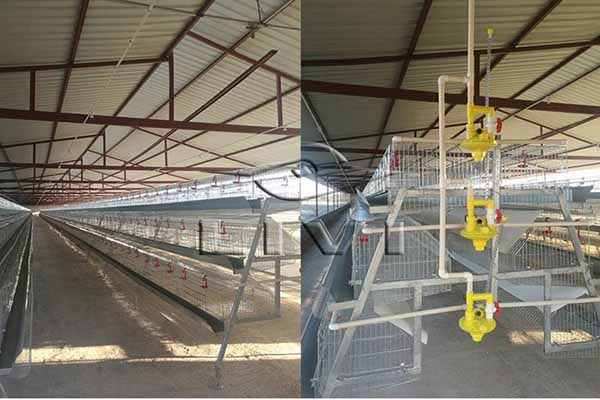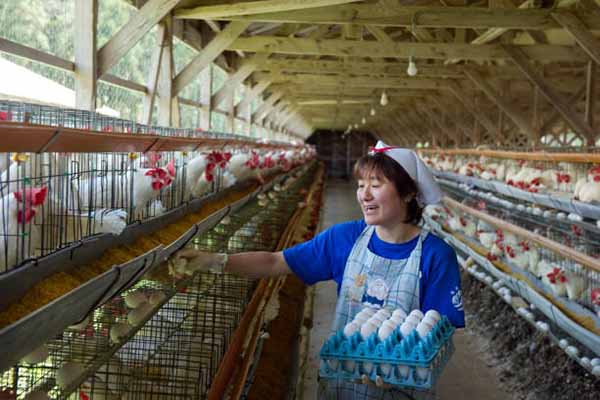Optimizing Your Kenya Chicken Farm Automation Equipment Purchase Budget
Time : 2025-06-28
Kenya’s poultry industry has seen a significant growth in recent years, with chicken farms becoming more sophisticated in their operations. Automation is a key factor in enhancing productivity and reducing costs in this sector. For those looking to invest in automation equipment for their chicken farm, it’s crucial to understand the factors that influence the purchase budget. This article will delve into the key aspects to consider when budgeting for automation equipment for your Kenya chicken farm.
Understanding the Needs of Your Chicken Farm
The first step in budgeting for automation equipment is to assess the specific needs of your chicken farm. This involves considering the size of your farm, the number of chickens, and the current level of manual labor involved in various processes.

Here are some key factors to consider:
- Flock Size: A larger flock will require more advanced automation to manage feed distribution, water supply, and environmental control.
- Farm Layout: The layout of your farm will determine the type of automation equipment needed. For example, a barn-style layout may benefit from automated feeding systems, while free-range farms might require tracking systems for birds.
- Labor Availability: If your farm has limited labor resources, automation can help streamline operations and increase efficiency.
Types of Automation Equipment for Chicken Farms
There are various types of automation equipment available for chicken farms, each serving different purposes. Here are some of the most common types:
Feeding Systems
Automated feeding systems are essential for maintaining consistent feed intake among chickens. These systems can be programmed to dispense feed at specific times, ensuring that the chickens receive an appropriate amount of nutrition.
- Gravity Feeding: Simple and cost-effective, gravity feeding systems rely on the force of gravity to dispense feed.
- Electronic Feeding Systems: More sophisticated systems use sensors to monitor feed consumption and adjust the feed flow accordingly.
Water Supply Systems
Water is crucial for the health and productivity of chickens. Automated water supply systems can ensure a constant and clean water supply, reducing the risk of disease and improving overall bird performance.
- Nipple Drinkers: These devices provide individual water access to each bird, preventing waste and contamination.
- Drinkers with Water Heaters: In colder climates, water heaters are essential to keep the water at an appropriate temperature for consumption.
Environmental Control Systems
Automated environmental control systems can help maintain optimal conditions for chickens, such as temperature, humidity, and air quality. This is particularly important during extreme weather conditions or in large, open barns.
- Climate Control Systems: These systems can automatically adjust heating and cooling to maintain a stable environment.
- Air Quality Monitors: Sensors can detect harmful gases or ammonia levels and alert the farmer to take corrective action.
Health Monitoring and Tracking Systems
Automated health monitoring systems can help farmers detect and respond to issues with their chickens early. These systems often include sensors that monitor temperature, weight, and behavior.

- Weight Monitoring: Scales can automatically weigh chickens to track their growth and health.
- Behavioral Monitoring: Cameras and sensors can detect abnormal behaviors that may indicate illness or stress.
Cost Considerations
When budgeting for automation equipment, it’s important to consider both the initial purchase cost and the ongoing maintenance and operational expenses.
Here are some cost factors to consider:

- Initial Purchase Cost: This includes the cost of the equipment itself, as well as any installation or training costs.
- Operational Costs: These include energy consumption, maintenance, and potential repair costs.
- Replacement Costs: Some equipment may require periodic replacement or upgrades.
Financing Options
Investing in automation equipment can be a significant financial undertaking. There are several financing options available to help chicken farmers manage their budget:
- Loans: Agricultural loans are available for equipment purchases, often with favorable interest rates.
- Leasing: Leasing equipment can reduce the upfront cost and provide flexibility.
- Grants and Subsidies: Some governments and organizations offer grants and subsidies for farm automation projects.
Conclusion
Investing in automation equipment for your Kenya chicken farm can lead to significant improvements in productivity, efficiency, and overall profitability. By carefully considering your farm’s needs, understanding the types of equipment available, and budgeting accordingly, you can make informed decisions that will benefit your operation in the long term.
As the poultry industry continues to evolve, staying ahead of the curve in automation technology is crucial. By making smart investments in automation equipment, you can ensure that your farm remains competitive and sustainable.











